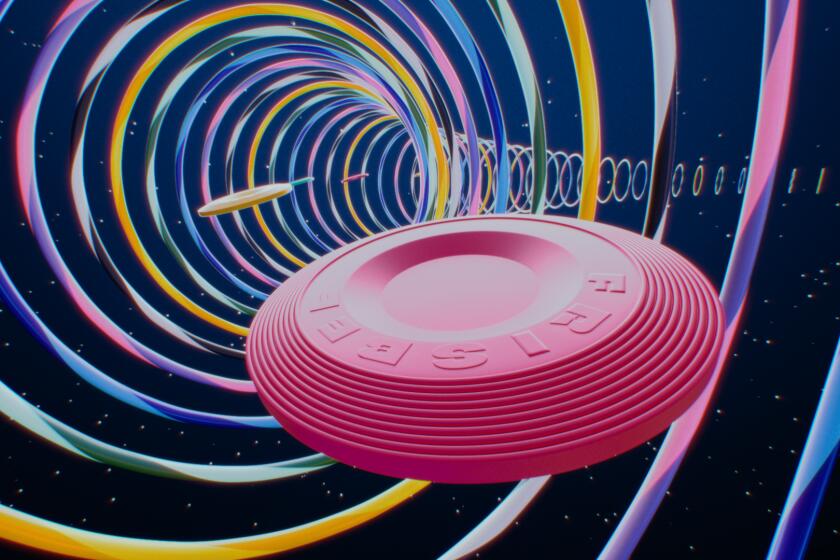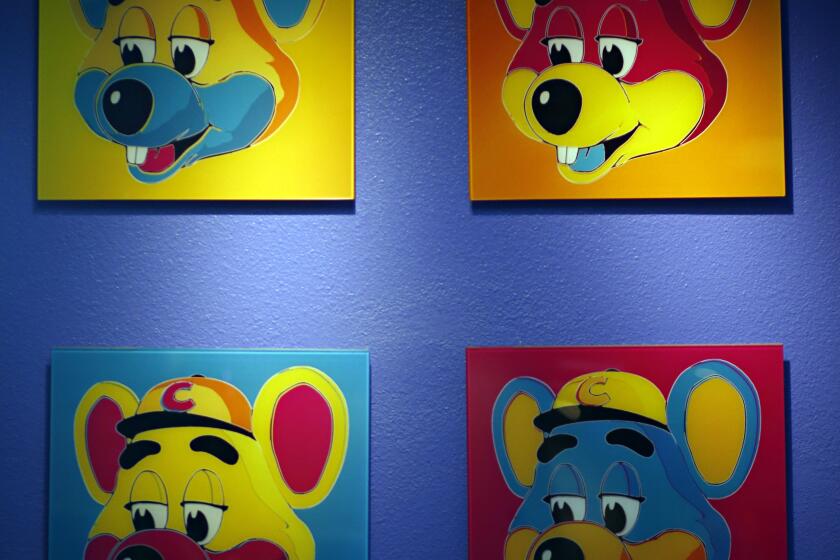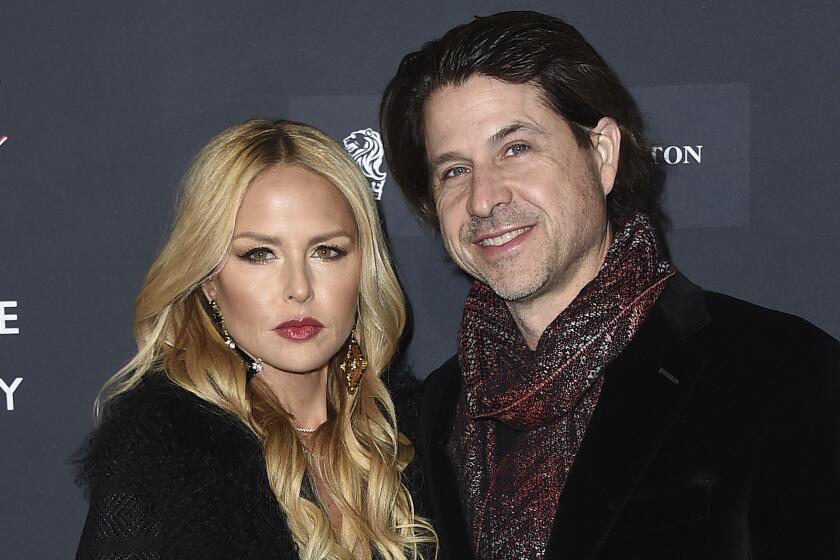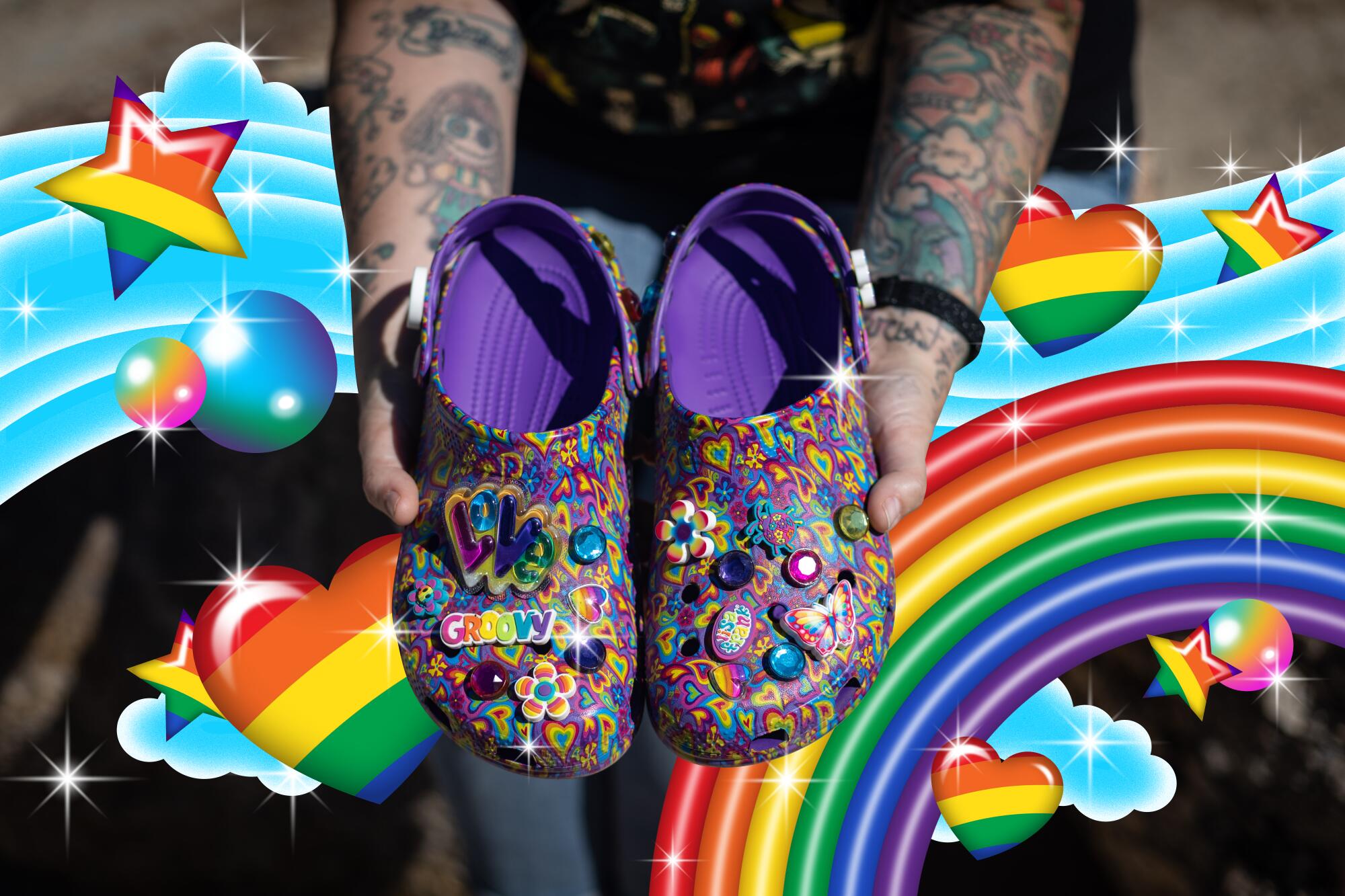
In elementary school, Christina Martin loved the bright colors and whimsical animals of artist-entrepreneur Lisa Frank.
There were leopard prints and animals with big eyes, dolphins jumping out of a teal or purple ocean. As a self-described “weird kid,” Martin was drawn to the fantasy of it all. But while her classmates toted binders with the iconic characters, Martin’s mother couldn’t afford to buy her any. (A friend eventually gave Martin her hand-me-down Lisa Frank things when she got new ones.)
So about 30 years later, when Martin, now 40, saw an ad on her Facebook feed for Lisa Frank Crocs, she knew she had to have them — even though she had vowed she’d never wear those round rubber shoes. Her sister bought them for her as a birthday gift, and she’s worn them every day since they arrived.
“It’s so silly, they’re just shoes but just, the nostalgia bone,” Martin, a Rosamond, Calif., resident, said with a laugh. “That’s where they get you.”
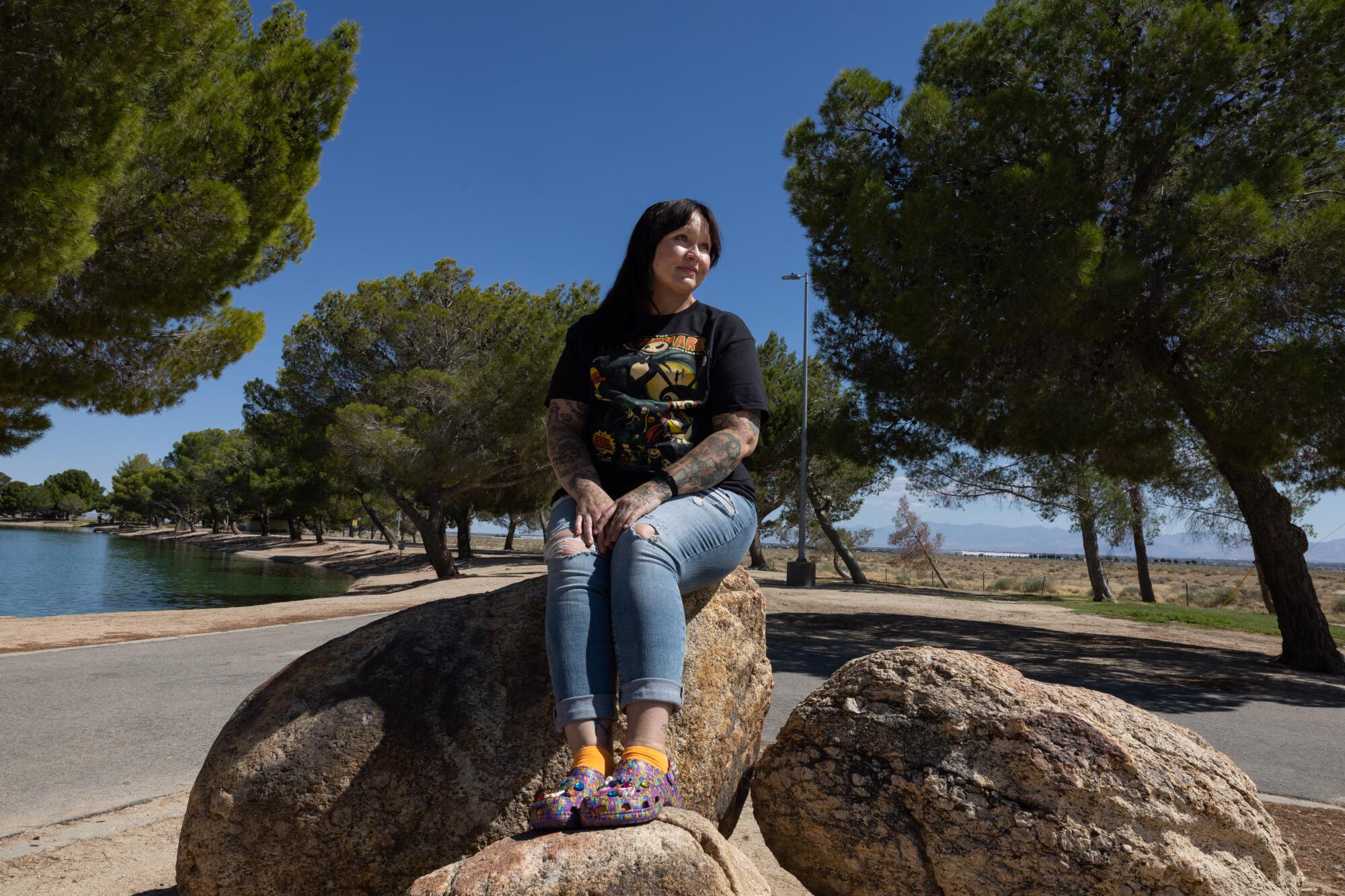
The ’90s are back, and brands that millennials loved as children or young adults — Lisa Frank, Paul Frank with the wide-mouthed monkey face, Caboodles plastic cases and more — are now banking on their old customers wanting to relive their childhoods.
In addition to the Crocs partnership and one with BlendJet blenders, Lisa Frank also has a collaboration with Glendale-based children’s clothes maker Posh Peanut for highly sought-after onesies, dresses and other products that sell out online in less than an hour. The round-edged Caboodles are marketed for holding grown-ups’ makeup. Jelly shoes now come in adult sizes.
“Who doesn’t like a brightly colored kitty cat or puppy dog on their children’s items, particularly in times that are stressful?”
— Danielle Sponder Testa, Arizona State University assistant professor of fashion
Although these brands are trying to capitalize on Gen Z’s zeal for all things ’90s, they’re also clearly trying to re-engage their original customer base — and “growing up” their products to make the buy a little easier to sell.
“It’s almost like you get to relive your nostalgia in the present day, whether it’s through you or your child,” said Danielle Sponder Testa, assistant professor of fashion at Arizona State University. “Who doesn’t like a brightly colored kitty cat or puppy dog on their children’s items, particularly in times that are stressful?”
Nostalgia marketing isn’t new, but the ’90s resurgence comes at a particularly tense time in America. The stresses of the pandemic, political strife and economic uncertainty all weigh heavily on consumers and can encourage yearnings for a simpler time, marketing experts say.
“For the past 10 to 15 years, there’s been a lot of instability in the world,” said Jannine Lasaleta, associate professor at Yeshiva University who studies nostalgia’s effect on consumer behavior.
Products that hearken back to childhood “may be really attractive to new parents because it brings this sense of stability and groundedness, authenticity, social connection,” she said. “Why wouldn’t you want to share these things that bring you these types of feelings with your child?”
Wham-O, the Frisbee and Hula Hoop toy company founded by two USC grads, is 75 and embracing nostalgia while striving for relevance with a new generation and their dogs.
Shortly after Lily Rose found out she was pregnant, the 35-year-old mom-to-be started seeing Instagram ads for Posh Peanut’s Lisa Frank baby clothes. She was thrilled.
The bright patterns brought her back to her elementary school days, when she, her mom and her two sisters would shop for school supplies at Target and buy binders, stickers, folders and notebooks all emblazoned with Lisa Frank rainbow designs. (Lisa Frank’s Tucson-based business empire shrank dramatically from its heyday amid personal and business problems, documented famously in a 2013 Jezebel profile headlined “Inside the rainbow gulag.”)
Rose added some of the Lisa Frank baby clothes to her registry but they sold out before anyone could buy her anything. She had even preemptively added a Lisa Frank swimsuit to the list, even though her daughter will be born in December.
“I still check every once in a while to see if anything is back in stock,” said Rose, a Woodland Hills resident. “It just reminds me more of a simpler time, like my childhood, and fun times, happy times. Just kind of a way to bring that nostalgia to my little girl is exciting to me.”
He started making peppermint castile soap in his Pershing Square tenement in 1948. Here’s the very California story of the man, the cultish product and the progressive company.
Those feelings of nostalgia can also drive consumers to pay more for a product than they would normally.
In Lasaleta’s research, she found that when people are nostalgic, they care less about money. She experienced her own conclusions firsthand when she took her nieces to Build-A-Bear Workshop, and they picked out My Little Pony stuffed animals, which Lasaleta herself liked as a child.
Not only were the My Little Pony horses expensive, but they also had four legs, which meant she had to buy two pairs of shoes for each one. She bought them anyway.
“I’m a little bit more OK spending money for that than a brand that I had no idea what it is,” Lasaleta said.
“If I could buy everything Lisa Frank, I probably would, if I could afford it.”
— Autum Haywood, Lisa Frank fan
Autum Haywood, 38, estimates that she’s spent about $1,000 on Lisa Frank items as an adult, including a rainbow-print purse, a blanket emblazoned with colorful unicorns, a rainbow, leopard-print towel, Angel Kitty dress, backpack and lunchbox for her daughter and two pairs of pajamas printed with rainbow-spotted dogs and dolphins, respectively, for herself.
She’s a frequent shopper on the Posh Peanut website and gets notification texts sent to her phone when new collections drop. She knows the names of all the Lisa Frank characters and has fanned out across the internet to find other items.
“If I could buy everything Lisa Frank, I probably would, if I could afford it,” said Haywood, a Lincoln, Ala., resident and mother of two. “It is expensive.”
She wants to share her love of Lisa Frank with both her children, but she’s already been rebuffed by her 8-year-old son.
“You don’t like this? It’s Hunter, he’s a leopard,” she remembers saying to her son. “He’s like, ‘No, Mama. I don’t like that.’ I’m like, ‘OK.’”
Amanda Beck, 41, spent $40 on a twirly, rainbow unicorn Lisa Frank dress for her daughter, after striking out with several other items on the Posh Peanut website.
“I feel I can justify the purchase because it’s for my kid and not for me,” she said.
She’d also hoped to buy adult-sized pants for herself, though those sold out fast. She also noticed that a duffel bag and backpack sold out in minutes. (As a high school teacher, she wishes the Lisa Frank folders would come back.)
“Obviously the people who wanted to buy something for their kids for the nostalgia were like, ‘Oh, I could get something for me too?’” said Beck, a Brooklyn, N.Y., resident.
Chuck E. Cheese has faced its share of struggles. But the family fun center and its well-known musical rodent have so far managed to weather changing playtime trends, gaming advancements and a pandemic that turned its arcades into ghost towns.
Other brands from millennials’ childhoods have also seen healthy sales.
Caboodles has had “stable sales for many years,” said Stacey Goldstein, lifestyle category director of Caboodles, though she declined to give sales figures. The brand, which is now owned by fishing tackle firm Pure Fishing, saw a bump during the pandemic when home organization was a top priority, she said.
The original idea for Caboodles, launched in 1987, came from a fish and tackle box, which has many compartments and a secure latch. Over time, Caboodles cases came to be a staple for children and young adults in the ’90s to carry makeup, pretend makeup and toys or even first-aid supplies.
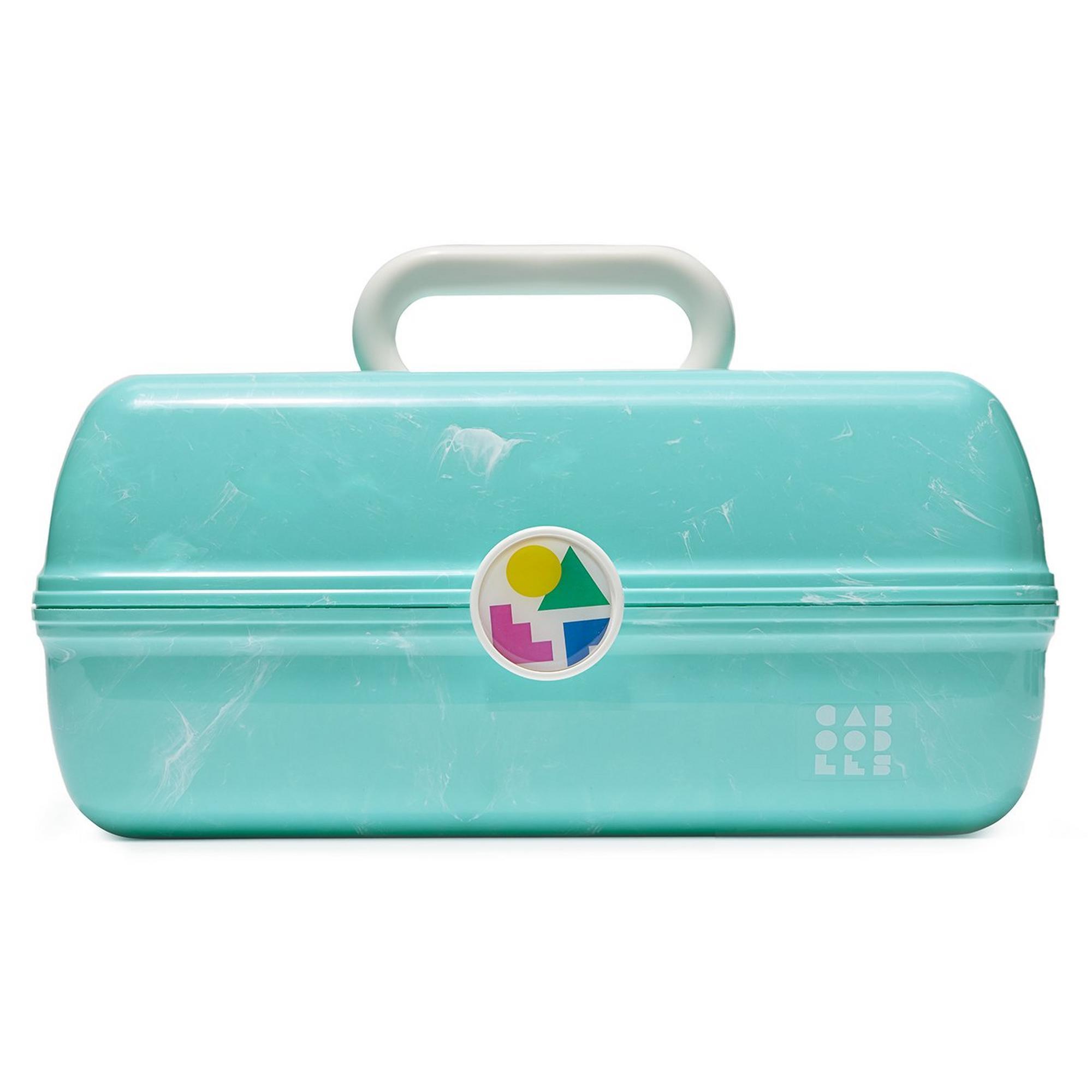
The cases still come in the pinks and purples that millennials might remember, but over the years, they’ve also evolved to suit their maturing audiences, with black and white Caboodles and small and sleek cosmetic cases.
The company sees two main audiences for the cases — women who had Caboodles as teens in the ’80s and ’90s and have a “strong affinity” for the brand and those women’s children.
“The brand equity is so strong with them,” Goldstein said of millennials. “Anybody I really talk to about the brand, their eyes kind of light up, they think back to when they were a teenager [and] they had the product. When there’s strong brand equity, there’s opportunity there from a marketing standpoint.”
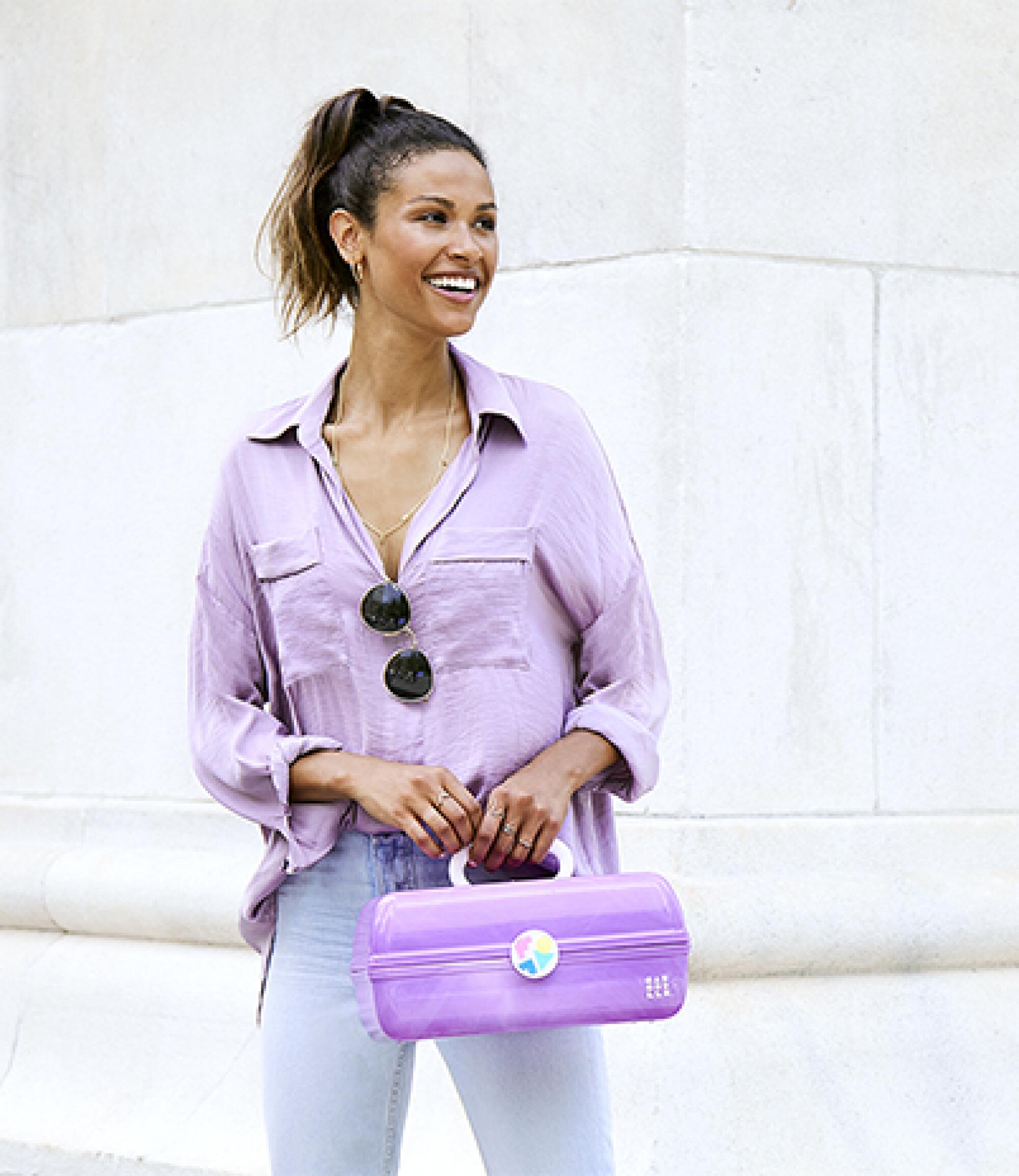
Paul Frank, too, has seen a resurgence. The brand started in 1995 in Huntington Beach when artist Paul Frank started making custom wallets for his friends. Over time, Julius the monkey and other critters showed up on T-shirts, pajama pants and all manner of items.
In 2020, Swiss licensing firm Futurity Brands announced it had acquired all intellectual property rights to Paul Frank. The group of investors and the company’s chief executive were interested in Julius and his friends because their families had been familiar with the brand in the early 2000s.
“We saw that this brand is really, really loved and just needs a little more love to get it back to where it used to be ... but to also get it new fans as well,” said Michael Puglisi, global licensing manager for Futurity Brands, who has been with Paul Frank for seven years.
The brand has a five-person marketing agency based in Los Angeles to keep an eye on local trends and hopes to open stores and pop-ups in the Southern California area, he said.
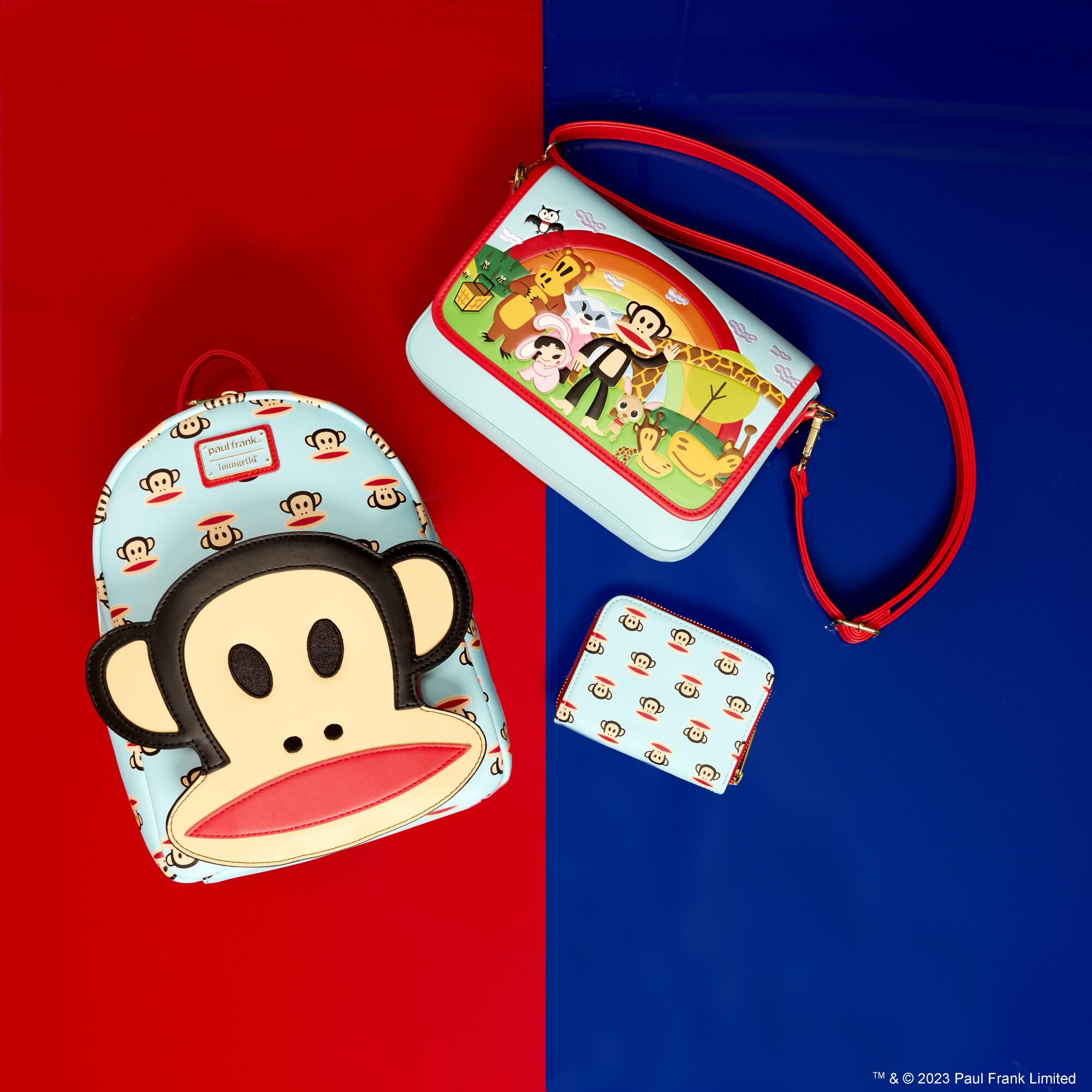
Already, there are 480 Paul Frank stores throughout China, with only 100 of those aimed at children. The brand also operates Paul Frank cafes in South Korea and Taiwan, as well as stores in Thailand and Taiwan. (In Asia, Paul Frank took off around 2016 and 2017, after the brand’s popularity had waned in the U.S.)
In the U.S., Paul Frank has done collaborations with backpack manufacturer Loungefly, skater company Slushcult and streetwear brand Anti-Social Social Club. All of those are aimed more at adults than the younger ages that once wore Paul Frank.
Nostalgia, Puglisi said, is “big.”
For Martin, the Lisa Frank fan in Rosamond, that sense of nostalgia is particularly poignant. As a recovered drug addict and alcoholic, she said the Crocs represented a milestone in her healing process and helped her realize that she deserved good things. She’s now been sober for about six years.
“To me, it is about that inner child,” said Martin, who owns a housekeeping business and wrote a book about her journey to recovery. “It puts me back into that creative, childlike essence that I normally don’t get to be a part of because I’m so busy doing all the things I need to do to keep my life together.”
If she didn’t have that spark of color in her daily life, she said, things would get really dull.
More to Read
Inside the business of entertainment
The Wide Shot brings you news, analysis and insights on everything from streaming wars to production — and what it all means for the future.
You may occasionally receive promotional content from the Los Angeles Times.

